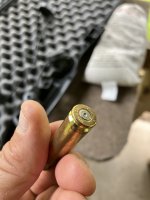Every rifle/load combination I have that I shoot over 300 yards, I have both warm and cold temp data, trued BCs and my dope confirmed on 1/2 MOA truing bars out past 500 yards. The solver, whether the app, Kestrel or the PC version all account for atmospherics. Most of those are centerfire, but I do have one load done for my precision .22LR with 2 different factory loads. And, like for .35Rem and .45-70, I don't bother since I don't shoot it past 300.
I generally am pretty close with the temp sensitivity. Been doing this for a bit. And not having it, has, in the past bit me in the butt.
But yes, the adjustments in the post you quoted are for one specific load out of one specific rifle.

